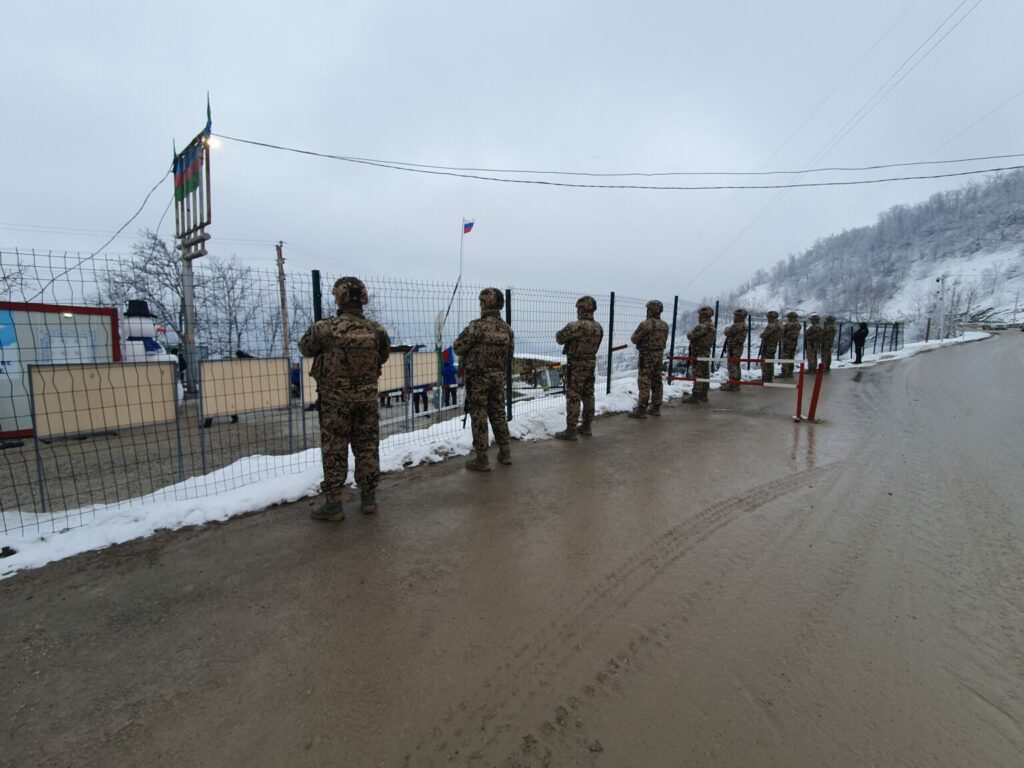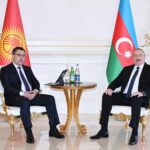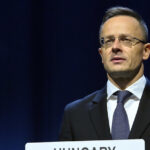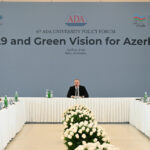A few weeks ago I visited the protests on the Lachin road after a long six-hour drive from the Azerbaijani capital city of Baku. What I witnessed is very different to the news reports and diplomatic protests that are being made and circulated about the three-month-long protests.
The protests are an outcome of Azerbaijan’s frustration at the unwillingness of the Armenian government and Russia to implement the November 2020 ceasefire agreement that ended a 44-day war between Yerevan and Baku. Three countries, Russia, Armenia and Azerbaijan, signed the trilateral agreement but only Baku has lobbied to implement it.
The trilateral agreement would have led to the demilitarisation of the Karabakh enclave inhabited by approximately 40-50,000 Armenians, and the signing of a peace treaty between Azerbaijan and Armenia. Unfortunately, certain groups in Armenia has been unwilling to accept various provisions in the ceasefire agreement and four UN resolutions from the 1990s declaring that Karabakh is internationally recognised as Azerbaijani territory. All of the fifteen former USSR republics, except Russia and Armenia, have accepted Soviet internal republican boundaries as constituting international borders. The Nagorno-Karabakh Autonomous Oblast existed from 1923 until 1991 as a part of Soviet Azerbaijan. In the 1990s, the UN issued a number of resolutions in support of Azerbaijan’s territorial integrity.
Armenian Prime Minister Nikol Pashinian has accepted that Karabakh is not a territorial question between Armenia and Azerbaijan but one of securing guarantees of human rights for the Armenian minority. Pashinyan is fearful of the vocal Armenian nationalist minority and its diaspora backers. In 1999, five extremists killed eight politicians in the Armenian National Assembly.
Meanwhile, Ruben Vardanyan, an oligarch who moved to Karabakh from Russia a few months ago in what many see as a Kremlin attempt to derail EU-brokered peace talks, rules out that Karabakh could ever be part of Azerbaijan. Late last year the EU was on the verge of brokering a peace agreement that would have ended three decades of conflict. Pashinian and Verdanyan see each other as political enemies because of their different stances on Karabakh and because Verdanyan is believed to be usuing Karabakh as a staging post to win the Armenian presidency, as have earlier Armenian presidents. 3 of 5 Armenian presidents were born in Karabakh and the Armenian diaspora.
While western media and commentators have scoffed at the environmental protests on the Lachin road, they have highlighted how the frozen conflicts from the early 1990s have created corrupt and lawless regions in Moldova, Georgia and Azerbaijan. These have helped line the pockets of various officials and separatists. In Karabakh, corrupt separatist leaders amassed billions of US dollars from the illegal exploitation of gold, forestry and other raw materials.
Russian “peacekeepers” have a 30-year track record of never resolving conflicts in Moldova, Georgia and Azerbaijan. Introduced as part of the trilateral agreement that President Vladimir Putin signed, Russian “peacekeepers” have – on the Kremlin’s instructions – not implemented its provisions.
Particularly important to the signing of a peace treaty is the withdrawal of separatist forces from Karabakh, which simply has not taken place. Instead, Russian “peacekeepers” have facilitated the transfer of military equipment and the rotation of separatist forces between Armenia and Karabakh through the Lachin road. Russia has used the same fake “humanitarian” convoys to transport military equipment that it began using after it occupied part of the Donbas in 2014.
Time is running out for Prime Minister Pashinyan and the separatist leaders in Karabakh. Azerbaijan’s President Ilham Aliyev recently stated that his country would not renew the mandate for the Russian “peacekeepers” in 2025. There are only just over two more years to go before Russian “peacekeepers” will be asked to withdraw from Karabakh. There is therefore limited time to negotiate and sign a peace treaty.

The ongoing war in Ukraine has shown the ineffectiveness of the Russian military and its Potemkin-like nature. Armenia and Belarus are Russia’s only remaining Eurasian allies; even Armenia abstained from last year’s UN vote condemning Russia’s annexation of eastern and southern Ukraine.
Russia’s likely defeat in Ukraine and the EU’s demand for Azerbaijani energy both serve to strengthen Baku’s hand in negotiations in the strategically important South Caucasus. Armenia has tied itself to a Russia in terminal decline that has lost its main European energy market and has become China’s de facto younger brother.
Rather than criticise and pressure the Lachin “blockade”, western diplomats and experts should, with the limited time Russian “peacekeepers” will remain on the ground, bring Armenia back into EU-brokered peace talks with the first step being the implementation of the ceasefire agreement. A peace treaty could include some form of international guarantees for minority rights and self-government. The demilitarisation of Karabakh should be accompanied by the dismantling of the attributes of Karabakh “statehood” that have been built during the region’s three-decade-long Armenian occupation.
Pashinyan came to power in a colour revolution in 2018 and his instincts are pro-western and he, unlike Verdanyan, has accepted Karabakh is part of Azerbaijan. Western governments and the EU should help him to make the right choice for Armenia, which is to consign three long decades of conflict to history and move Armenia forward. Only by signing a peace treaty before Russian “peacekeepers” withdraw in 2025 will Armenia be able to build peaceful relations with its neighbours, integrate into profitable energy routes to Europe and build its economy through integration with Europe.
The Russian “peacekeepers” and protesting students in Karabakh can then both return home.
Taras Kuzio is a professor of political science at the National University of Kyiv-Mohyla Academy and author of the forthcoming Fascism and Genocide. Russia’s War Against Ukrainians.










